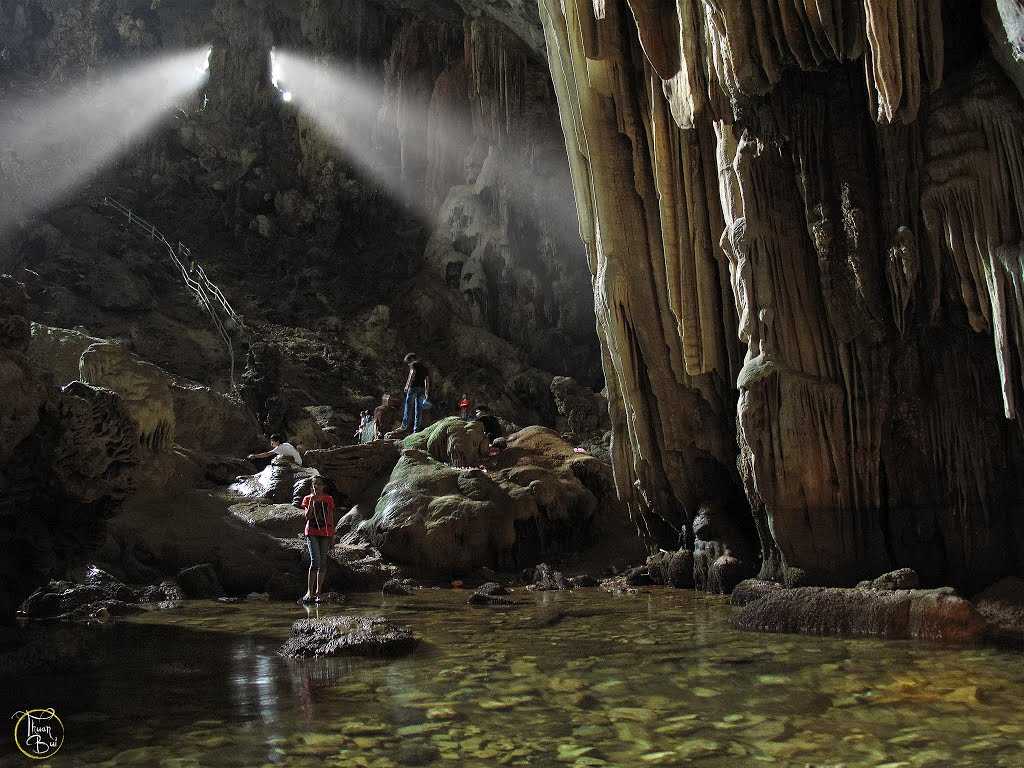In the late Paleolithic period, in the North of Vietnam, tribes appeared on different terrains from mountainous to plain, living with hunter-gatherer methods.
Thai Nguyen, with its rocky terrain, became a favorable place for the tribes of the post-Old Stone Age. The relics discovered at Phieng Tung cave have told us about a new stone industry – the scrap tool industry.
Phieng Tung Cave is also known as Mouth Tiger Cave. This is a site belonging to Than Sa archaeological complex. In Phieng Cave, scientists have found many artifacts of ancient people 18,000 to 30,000 years ago today. Not only hiding archaeological vestiges, the cave also contains beautiful stalactites with many shapes.

Phieng Tung Cave in Tay language means high and flat, located in the southeast of Meo mountain, in the territory of Trung Son hamlet (Ban Cai), Than Sa commune, Vo Nhai.
The cave is shaped like a tiger’s mouth, so people in the area call it Tiger Mouth Cave. The cave is about 10m wide, 20m long, 7m high, the gate turns to the southeast, about 50m higher than the valley below, about 50m from Nghinh Tuong river to the north. Inside the cave, there is a small niche, containing no archaeological remains. The cave floor slopes gently inward, with many rolling boulders on top. This cave is very convenient for primitive people to reside. The Nghinh Tuong small river flows year-round from the north to the east and south of the foot of Meo mountain. This section of the river in the dry season emerges large pebble beaches, which are a rich source of raw materials used by primitive people to make tools. A highlight of the Phieng Tung collection is the prevalence of small scraps. There are repair marks, in which sharp tools and scraping tools account for a large number.
Simultaneously with the excavation of Phieng Tung cave, archaeologists also conducted a survey of the Na Khu cave site. The documents obtained from the group of Tung-Na Khuu period relics, although not very rich, have suggested the existence of a group of archaeological relics with unique and new characteristics that other cultures do not have. The common relic here is the technique of machining scraps as scraping, cutting and tipping tools. The stripping tool is much more than the cobblestone tool. The pointed tool from the stripper forms a fairly regular shape. In 1980, nearly 10 sites were discovered in caves in this valley; One of the most significant discoveries is the Nguom rock roof site. In consecutive years 1980, 1982, Nguom rock roof site was excavated for the first and second time. Up to now, on the territory of Vietnam, 8 archaeological sites have been found with the second modified scraper tool. Of these eight sites, two typical sites for the flake tool industry are Nguom rock site and Phieng Tung cave site.
Source: Collected internet.